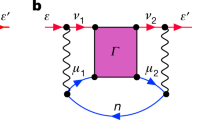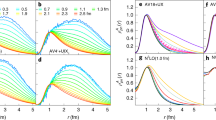Abstract
THE theory of quantum electrodynamics predicts the occasional emission of an electron-positron pair from an excited nucleus in place of a hard γ-ray. The probability of this event, or the ‘pair conversion coefficient’, has been calculated by Rose1. It is dependent on the quantum energy and on the multipole character of the nuclear transition.
This is a preview of subscription content, access via your institution
Access options
Subscribe to this journal
Receive 51 print issues and online access
$199.00 per year
only $3.90 per issue
Buy this article
- Purchase on Springer Link
- Instant access to full article PDF
Prices may be subject to local taxes which are calculated during checkout
Similar content being viewed by others
References
Rose, M. E., Phys. Rev., 76, 678 (1949).
Bradt, E., Halter, J., Heine, H. G., and Scherrer, P., Helv. Phys. Acta, 19, 445 (1946).
Brady, E. L., and Deutsch, M., Phys. Rev., 78, 558 (1950).
Rae, E. R., Phil. Mag., 40, 1155 (1949).
Author information
Authors and Affiliations
Rights and permissions
About this article
Cite this article
MIMS, W., HALBAN, H. & WILSON, R. Internal Pair Creation in Magnesium-24. Nature 166, 1027–1028 (1950). https://doi.org/10.1038/1661027b0
Issue Date:
DOI: https://doi.org/10.1038/1661027b0
Comments
By submitting a comment you agree to abide by our Terms and Community Guidelines. If you find something abusive or that does not comply with our terms or guidelines please flag it as inappropriate.



